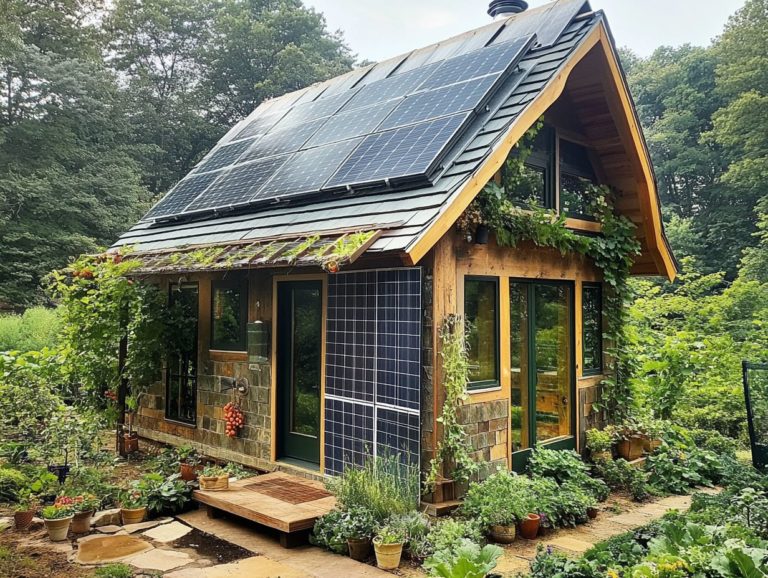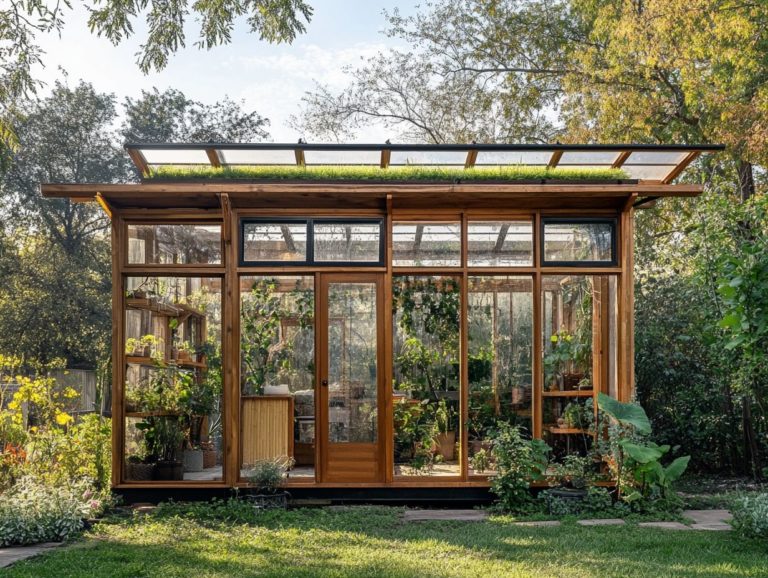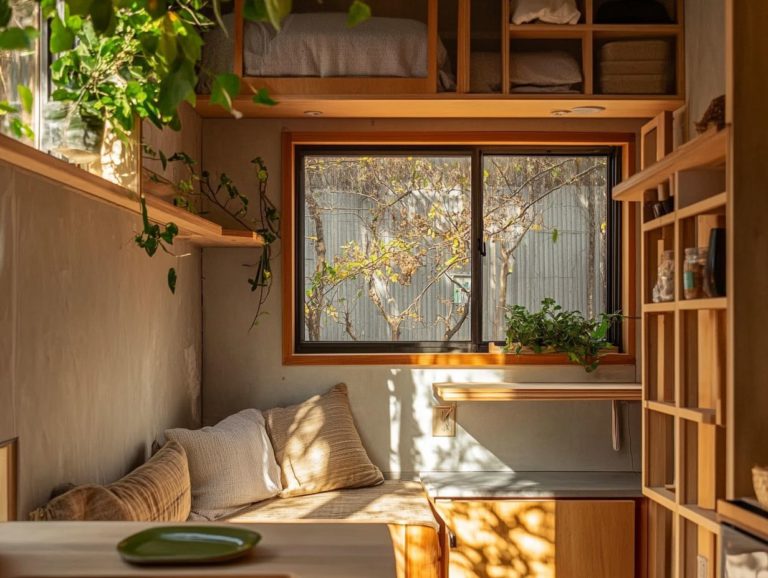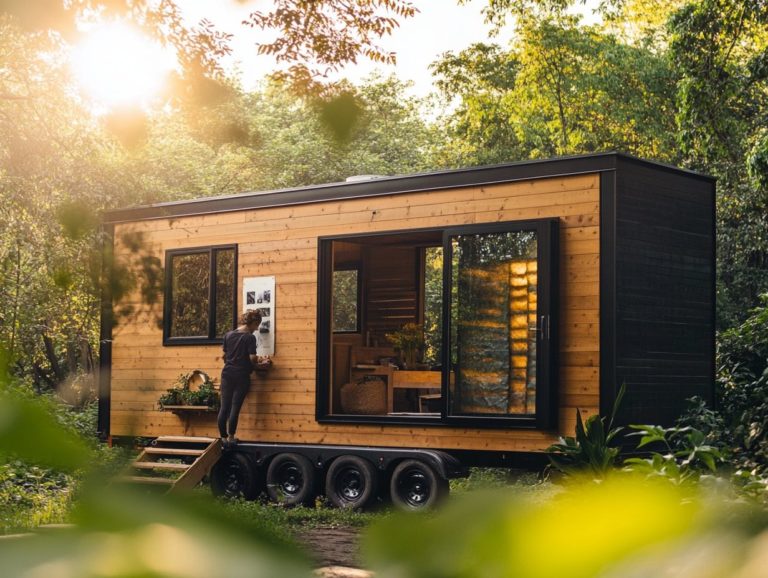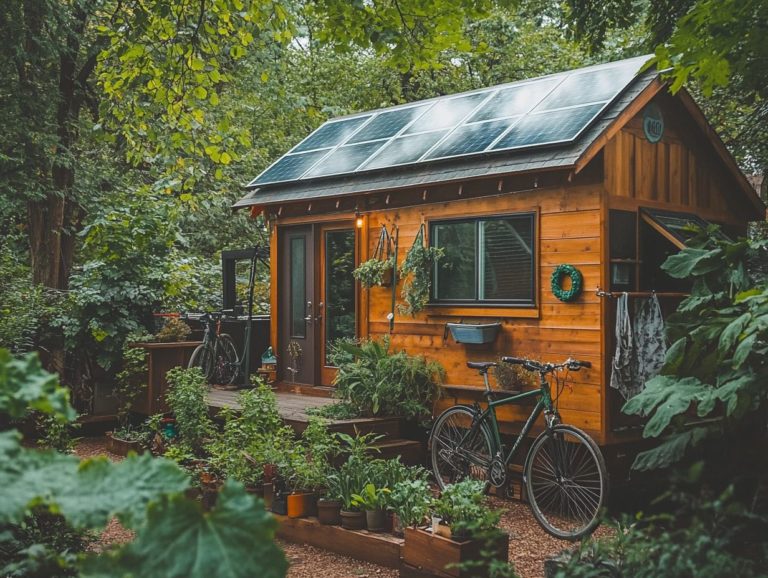Innovative Sustainable Materials for Tiny House Builders
As the tiny house movement continues to thrive, your search for eco-friendly building materials becomes increasingly essential. Traditional building materials frequently carry a significant environmental burden, leading you to explore innovative alternatives for your tiny home.
This article delves into the advantages of utilizing sustainable materials in tiny house construction. It highlights everything from cost savings to a diminished environmental footprint, especially in the context of sustainable living.
You’ll discover various types of sustainable options, insightful design tips, and practical solutions to tackle challenges. This ensures your tiny home is not only green but also highly functional within a framework of DIY projects.
Contents [hide]
- Key Takeaways:
- The Need for Sustainable Materials in Tiny House Building
- Benefits of Using Innovative Sustainable Materials
- Types of Sustainable Materials for Tiny House Building
- How to Incorporate Sustainable Materials into Tiny House Design
- Challenges and Solutions for Using Sustainable Materials in Tiny House Building
- Frequently Asked Questions
- What are some examples of innovative sustainable materials for tiny house builders?
- How do these materials contribute to sustainability in tiny house construction?
- Are these materials cost-effective for tiny house builders?
- What are the benefits of using innovative sustainable materials for tiny house builders?
- How can builders ensure that these materials are truly sustainable?
- Can these materials be used in all types of tiny house construction?
Key Takeaways:
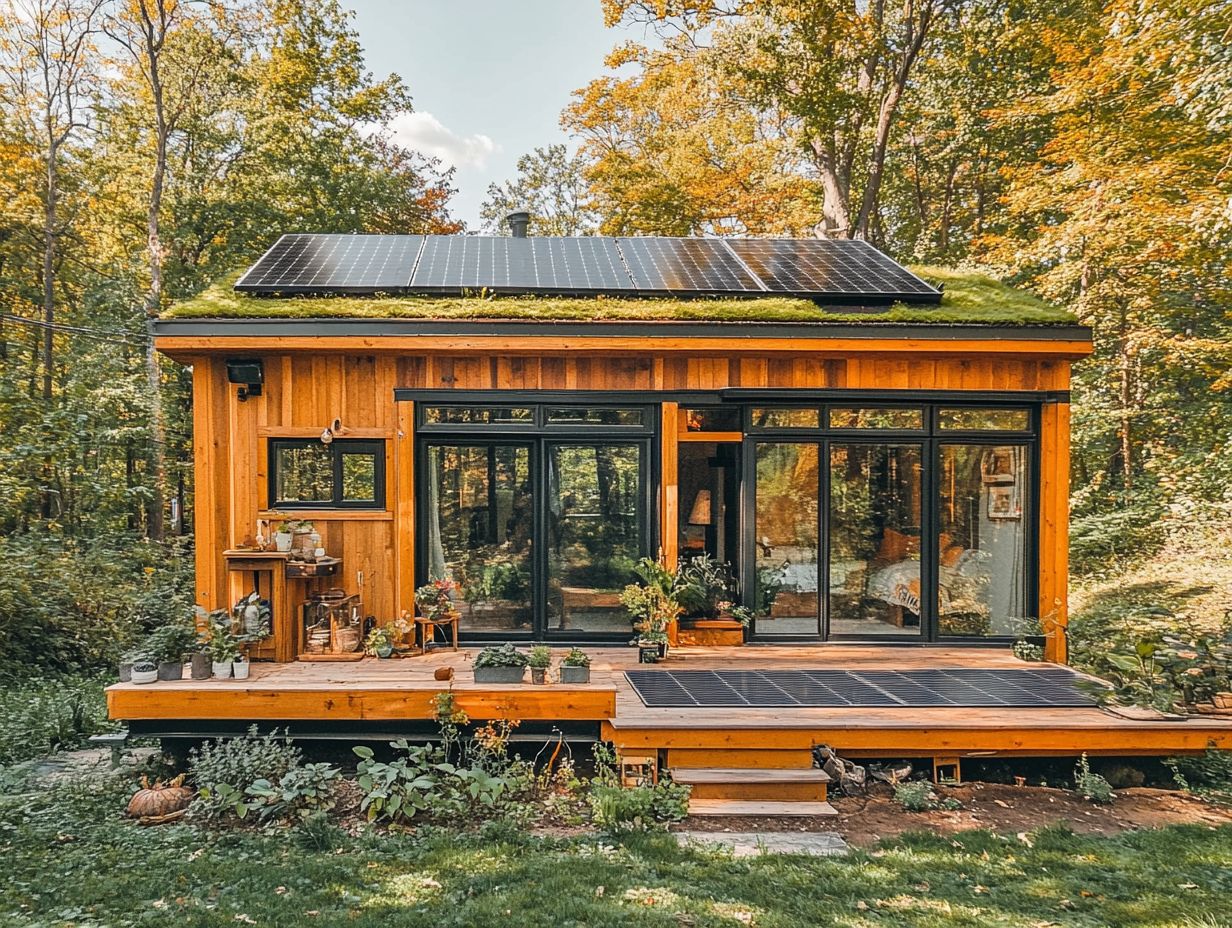
- Innovative sustainable materials offer cost savings and environmental benefits for tiny house builders and homeowners passionate about eco-friendly living!
- Recycled, natural, and high-tech materials can all be incorporated into tiny house design. This provides a variety of options for builders interested in modular design and innovative construction techniques.
- Despite some challenges, such as availability and cost, incorporating sustainable materials into tiny house construction is achievable with proper planning and design considerations.
The Need for Sustainable Materials in Tiny House Building
The demand for sustainable materials in tiny house building is increasingly essential. You embrace an eco-friendly lifestyle that prioritizes sustainability and minimalism, especially with innovative construction methods.
With the growing trend of tiny homes, innovative construction techniques are in high demand. These methods utilize reclaimed wood, bamboo flooring, shipping containers, and prefabricated homes, as well as cob, a natural building material made from clay, sand, and straw. Incorporating sustainable design practices for tiny houses helps craft energy-efficient and cost-effective living spaces that not only conserve resources but also align beautifully with the environment.
Incorporating natural light and spaces that can serve more than one purpose, including considerations for greywater recycling and alternative energy, is redefining home improvement projects while emphasizing ecological responsibility.
Environmental Impact of Traditional Building Materials
Traditional building materials can have a substantial environmental impact. They contribute to waste and resource depletion, which runs counter to the ideals of sustainable living, especially in the context of tiny homes and eco-friendly construction.
The extraction and processing of these materials often result in a considerable carbon footprint, adversely affecting air and soil quality. This makes the pursuit of alternatives like recycled materials more urgent. This waste generation doesn’t just clutter landfills; it also accelerates the depletion of non-renewable resource reserves.
The energy-intensive production processes involved underline the pressing need for a change in practices. By opting for alternative materials like hempcrete, recycled steel, or bamboo, as well as ecobricks, you can create structures that are not only energy-efficient but also environmentally friendly. Additionally, using reclaimed wood can enhance the sustainability of your project.
Imagine cutting down waste and saving resources! These sustainable materials do just that. They help minimize waste and require fewer resources, paving the way for greener building practices that align with modern environmental objectives, such as the use of high-efficiency appliances. For those interested in tiny homes, exploring sustainable building materials for tiny homes can be a great start.
Benefits of Using Innovative Sustainable Materials
By utilizing innovative sustainable materials, you unlock a multitude of benefits. This approach provides significant environmental advantages and translates into substantial cost savings for homeowners passionate about eco-friendly construction and DIY projects in tiny house building!
Cost Savings and Environmental Benefits
Cost savings and environmental benefits stand out as key motivators for homeowners considering innovative sustainable materials for their tiny homes.
Choosing reclaimed wood and shipping containers can significantly lower initial construction costs while creating an eco-friendly living environment. Reclaimed wood, known for its distinct character and durability, adds charm and often reduces costs due to minimal processing and treatment needs. Additionally, incorporating recycled materials in tiny house designs further enhances sustainability.
Shipping containers provide a sturdy framework that can be creatively repurposed, resulting in less waste and lower material expenses, especially in modular design.
Consider a recent case study from a tiny home community in Portland. Homeowners who adopted the best materials for tiny house construction experienced a remarkable 40% drop in energy bills, thanks to superior insulation materials and efficient design. This shows how you can save money now and enjoy long-term benefits, demonstrating a commitment to a greener future!
Types of Sustainable Materials for Tiny House Building

When considering sustainable materials for tiny house construction, you can explore three distinctive categories: recycled materials, natural materials, and high-tech materials, such as solar panels and energy monitoring systems.
Each option contributes uniquely to creating an eco-friendly and energy-efficient living space. This allows you to make informed choices that align with your environmental values and promote practices like reusing water from sinks and showers for watering plants.
Recycled Materials
Recycled materials, including shipping containers and ecobricks, are vital for achieving cost-effective and eco-friendly solutions in tiny house construction, supporting sustainability principles.
By adopting these innovative resources, you minimize waste and significantly reduce overall building expenses. For instance, shipping containers can be transformed into stylish, sturdy residences with minimal modifications. Meanwhile, ecobricks, made from plastic waste, provide an excellent alternative to traditional bricks, ensuring structural integrity while promoting environmental responsibility. Additionally, exploring innovative tiny house roof designs can further enhance your eco-friendly living space.
Utilizing these sustainable materials allows you to manage your budget efficiently, as they cut costs related to sourcing new materials and disposal fees. This approach makes a positive impact on the planet and encourages minimalism. For more insights, explore the role of sustainability in tiny house construction.
Natural Materials
Natural materials like bamboo and reclaimed wood are essential in eco-friendly tiny house construction. They provide visual charm and practical advantages while enhancing sustainable living principles.
These materials captivate with their beauty and offer remarkable insulation, ensuring comfortable indoor temperatures year-round. Their ability to regulate humidity promotes a healthier living space by reducing mold and allergens, creating a safer environment for you and your loved ones who appreciate tiny homes.
By incorporating resources like bamboo and reclaimed wood, you minimize waste and reduce the carbon footprint linked to conventional building materials. This dedication to sustainability nurtures a stronger bond with the environment, encouraging mindful living and inspiring eco-conscious decisions in all aspects of life, including high-tech appliances. For those living in smaller spaces, exploring smart design solutions for tiny house living can further enhance your eco-friendly lifestyle.
High-Tech Materials
High-tech materials, found in prefabricated homes and solar panels, offer energy-efficient solutions. These materials greatly enhance the sustainability of tiny house construction, especially when paired with advanced insulation materials.
These innovative components cut down on energy consumption and help reduce your carbon footprint. They’re perfect for environmentally conscious homeowners like you!
For instance, advanced insulation materials and High-Efficiency Appliances maintain ideal temperatures year-round, minimizing your need for excessive heating or cooling.
With smart technology like energy monitoring systems and greywater recycling (the process of reusing water from sinks and showers), you’ll be amazed at how easily you can track your energy usage. Additionally, incorporating sustainable paint options for tiny house interiors showcases how the construction industry is embracing these cutting-edge materials, making sustainable living more accessible.
How to Incorporate Sustainable Materials into Tiny House Design
Incorporating sustainable materials into your tiny house design requires a blend of customization and an understanding of design elements that prioritize eco-friendly solutions. Each choice you make can enhance both the aesthetic and environmental impact of your space.
Design Considerations and Tips
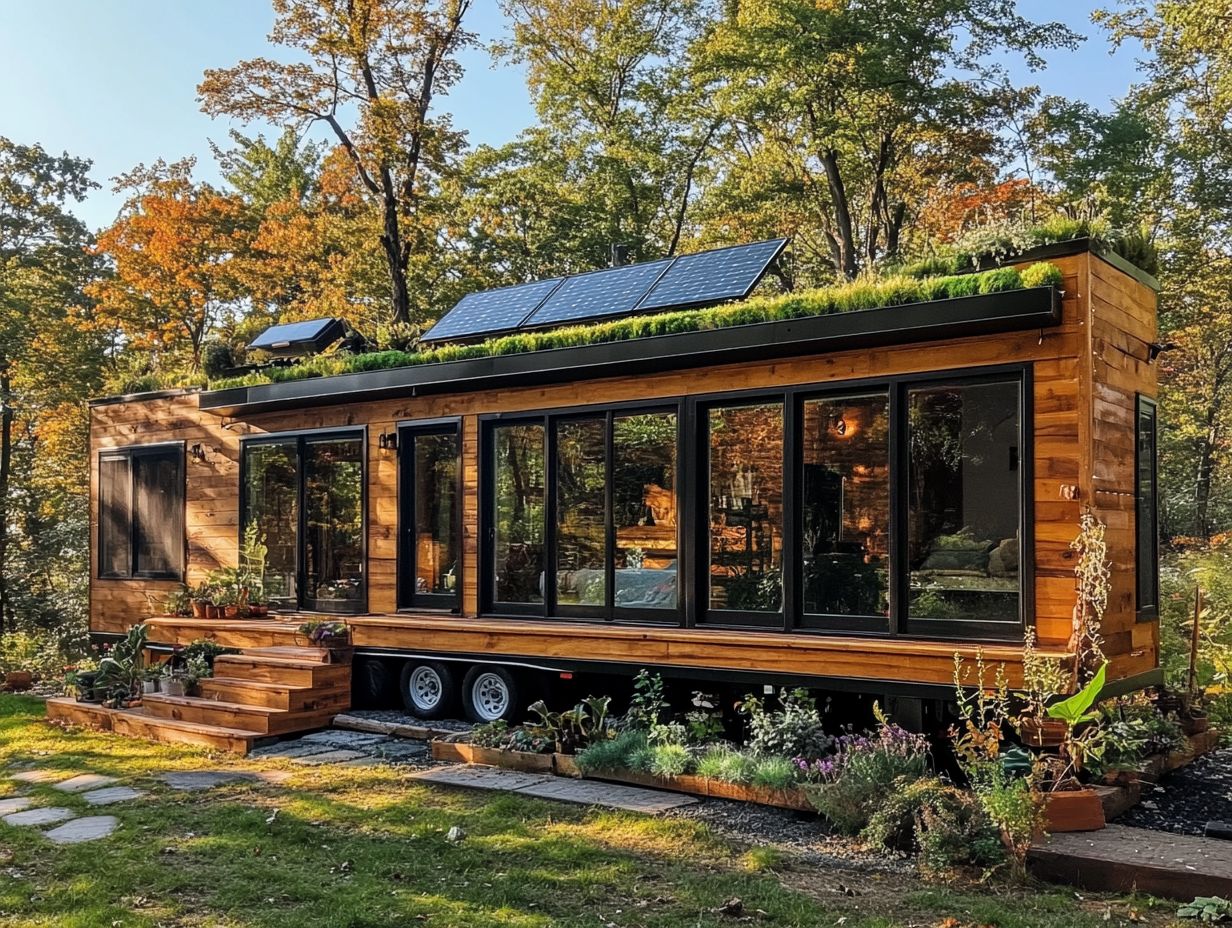
When designing your tiny home, consider how to maximize natural light and create multi-functional spaces. This approach enhances your living experience while keeping eco-friendly options in mind.
These strategies elevate the aesthetic appeal of your residence. They also promote energy efficiency and minimize your environmental footprint.
Choose light-colored, reflective surfaces to amplify sunlight, and strategically place mirrors for added brightness. Incorporating furniture that serves multiple purposes, like a foldable dining table or a bed with built-in storage, blends functionality with design.
Opt for eco-friendly materials like reclaimed wood or bamboo. These choices support sustainable practices and add unique character to your home.
Challenges and Solutions for Using Sustainable Materials in Tiny House Building
Building a tiny house with sustainable materials may present some unique challenges. These challenges often relate to resource availability and costs.
However, innovative construction solutions, like prefabricated homes, can help you overcome these obstacles. You can embrace eco-friendly practices and designs with ease.
Overcoming Obstacles and Making it Work
Overcoming obstacles requires practical solutions that resonate with eco-friendly principles.
One effective strategy is sourcing local materials. This method reduces transportation emissions and supports the local economy.
For example, a tiny house project in Oregon showcased how using reclaimed wood from nearby deconstructed buildings minimized waste. It also infused homes with unique character.
Innovative techniques like straw bale insulation have gained popularity for their remarkable thermal properties and eco-friendliness. Homeowners report significant energy savings and enhanced comfort.
Frequently Asked Questions
What are some examples of innovative sustainable materials for tiny house builders?
Examples include recycled steel, bamboo, hempcrete, and reclaimed wood.
How do these materials contribute to sustainability in tiny house construction?
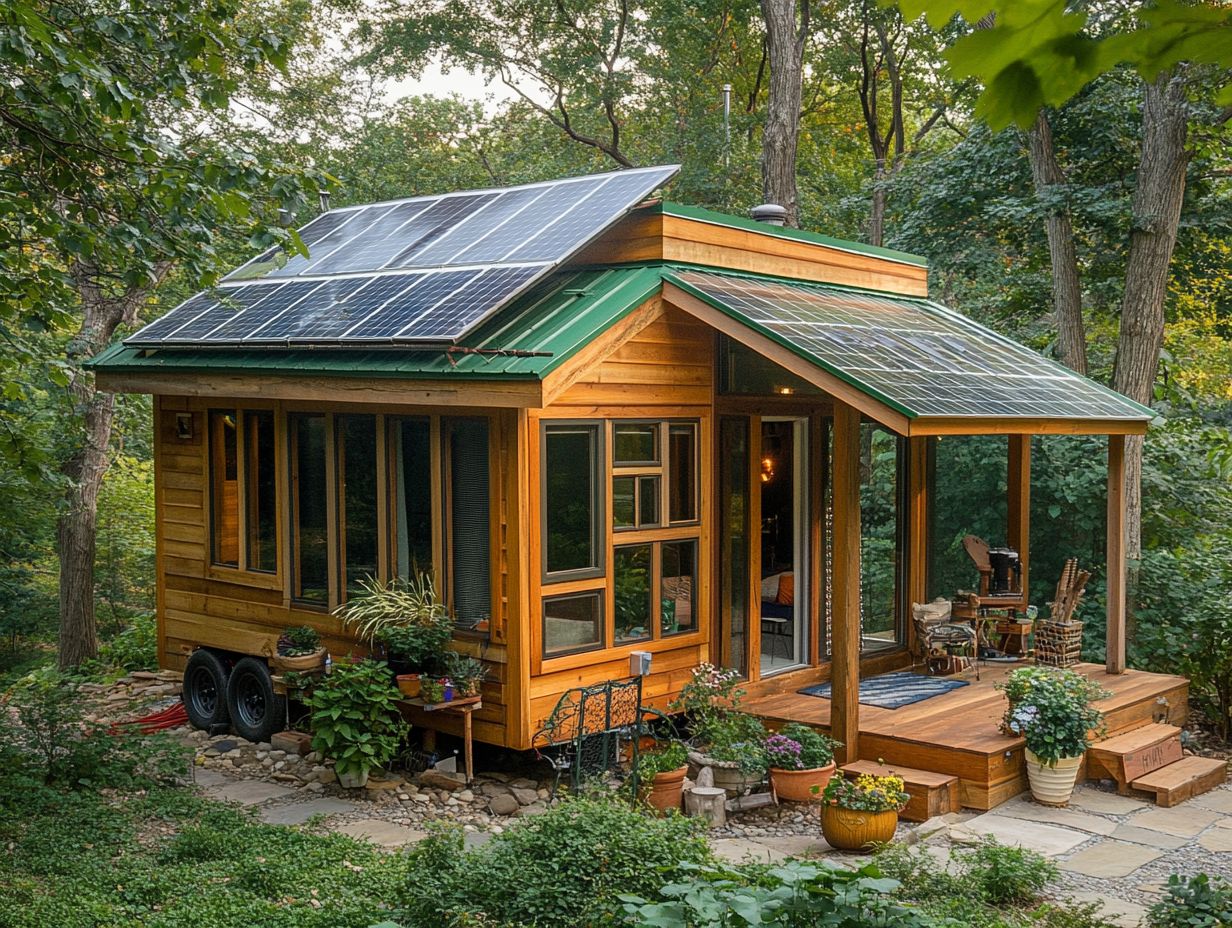
These materials play a crucial role in sustainability. They reduce the carbon footprint, promote renewable resources, and minimize waste.
Are these materials cost-effective for tiny house builders?
Some materials may have a higher upfront cost. However, they often lead to significant savings through energy efficiency and lower maintenance costs.
What are the benefits of using innovative sustainable materials for tiny house builders?
Using these materials fosters environmental responsibility. They also enhance energy efficiency and help create modern designs.
How can builders ensure that these materials are truly sustainable?
Builders should source materials from reputable suppliers. It’s also essential to maximize their lifespan and consider their overall environmental impact.
Can these materials be used in all types of tiny house construction?
Absolutely! These materials suit various construction types, including traditional stick-built homes, modular homes, and even shipping containers.

